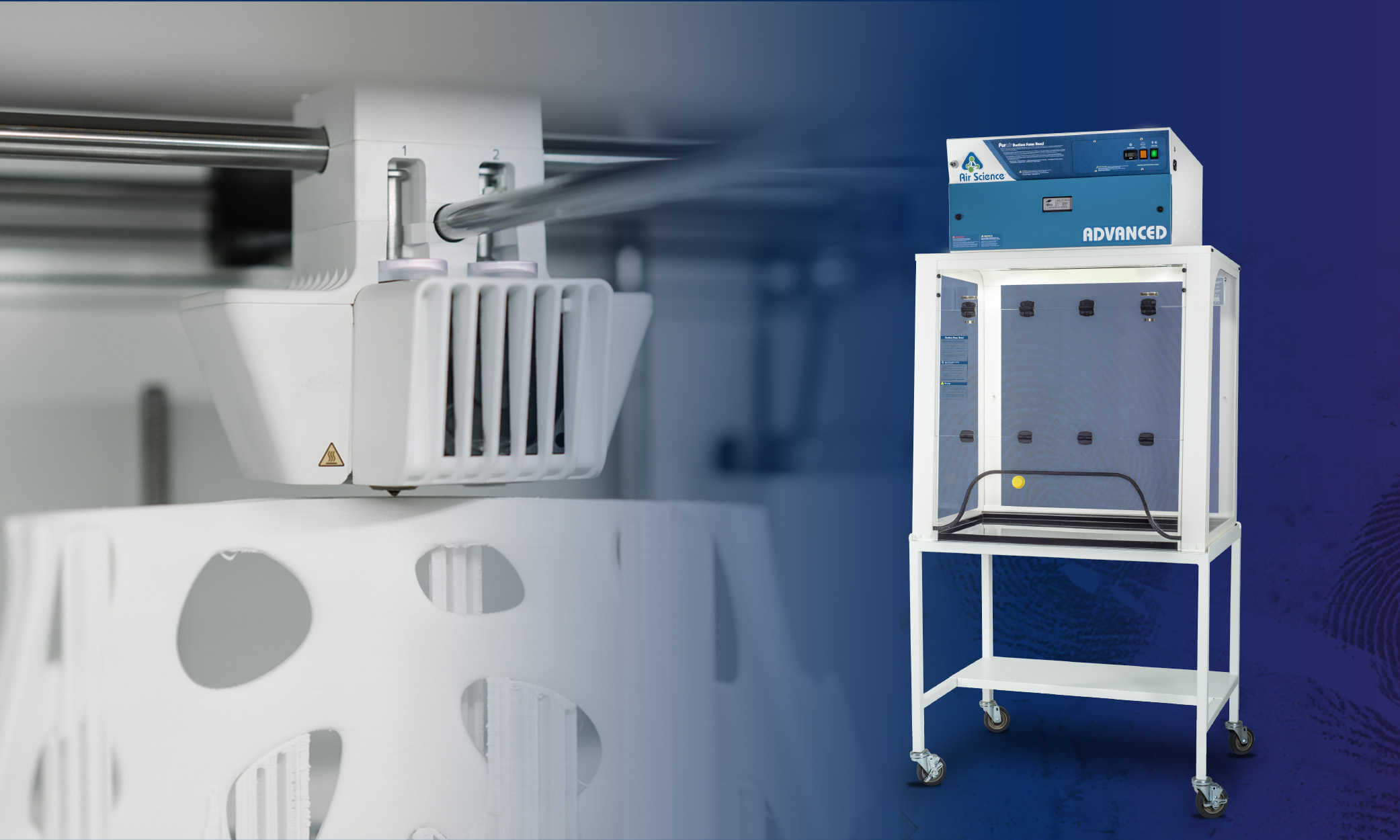
The Growing Use of 3D Printing in Forensic Applications
In the field of forensics, 3D printing has emerged as a powerful tool. This technology has proven invaluable in forensic science due to its ability to create accurate and detailed physical representations of digital evidence. These reconstructions can be used for training purposes, evidence presentations, forensic research, and evidence preservation. However, it’s crucial to remember that 3D printing processes generate fumes and particulates that pose potential health risks if not properly managed. As 3D printing technology continues to find its way in forensic sciences there is a need to create good practice for 3D printing processes and also ensure the continued safety of operators.
Fume and Particulate Hazards Generated from 3D Printing
3D printing is an additive manufacturing (AM) process that layers thin strips of melted material to form three-dimensional objects. During 3D printing, fumes and particulates that can be harmful if inhaled are released into the air. Over time, gases and particles emitted during 3D printing can accumulate and place the operator at risk and impact indoor air quality. Safety precautions to protect workers and the environment from volatile organic compounds (VOCs) and ultrafine particles (UFPs) emitted during the 3D printing process are essential. Yet, these safety regulations are not typically imposed on smaller operations.
Some of the hazardous fumes emitted during 3D printing include:
Volatile organic compounds (VOCs): These are gases emitted from liquid or solid materials that have a high vapor pressure at room temperature. VOCs emitted during 3D printing can cause a variety of health problems, including respiratory irritation, headaches, dizziness, and nausea.
Ultrafine particles (UFPs): These are particles that are smaller than 100 nanometers in diameter. UFPs can be generated by the heating and cooling of the printing material, as well as by the friction between the printing nozzle and the build platform. UFPs can cause a variety of health problems, including respiratory irritation, inflammation, and cardiovascular disease.
Essential Equipment for 3D Printing: Ducted and Ductless Fume Hoods
Forensic facilities that utilize 3D printing should invest in either a ducted or ductless fume hood, equipped with an added HEPA/ULPA filter, to mitigate the emission of hazardous fumes and particulates generated during the printing process. When choosing a fume hood, it is important to consider the size of the printer, the materials that will be used, and the budget. It is also important to ensure that the fume hood is properly maintained to ensure that it is operating effectively. Both options offer effective filtration and ventilation solutions, but their suitability depends on the specific requirements and environment of the facility.
Ducted fume hoods are ideal for high-volume 3D printing operations. They efficiently expel fumes and particulates through a ductwork system that vents directly to the outside environment.
Ductless fume hoods offer greater flexibility and portability compared to ducted hoods. They recirculate and filter the air within the hood itself, eliminating the need for external ductwork. This makes them easier to install and relocate, suitable for smaller or temporary setups. However, it is crucial to ensure that ductless fume hoods are equipped with high-efficiency particulate air (HEPA) or ultra-low penetration air (ULPA) filters to effectively capture and remove harmful particles. Regular filter maintenance and replacement are essential to maintain optimal performance and safety.
Air Science® Air Filtration Products for Forensics 3D Printing
Air Science offers a range of air filtration products for forensic 3D printing applications, including ductless fume hoods and ducted fume hoods. These products are designed to capture and remove harmful fumes and particulates generated by 3D printing, protecting workers and the environment.
Ducted Fume Hoods
Air Science Total Exhaust™ ducted fume hoods are designed to provide superior personnel protection from exposure to hazardous agents and toxic chemicals in a variety of applications. Total Exhaust fume hoods use horizontal and vertical airflow across the work surface to ensure optimal containment.
Ductless Fume Hoods
Ductless fume hoods by Air Science® protect your personnel and the environment from toxic or volatile chemicals so that you can concentrate on what matters most: your work. Continuous airflow across the work surface draws contamination away from the user, recycling clean air back into your laboratory. Our ductless fume hoods provide energy savings, safety and convenience and are available in a variety of configurations, including mobile fume hoods and polypropylene fume hoods.